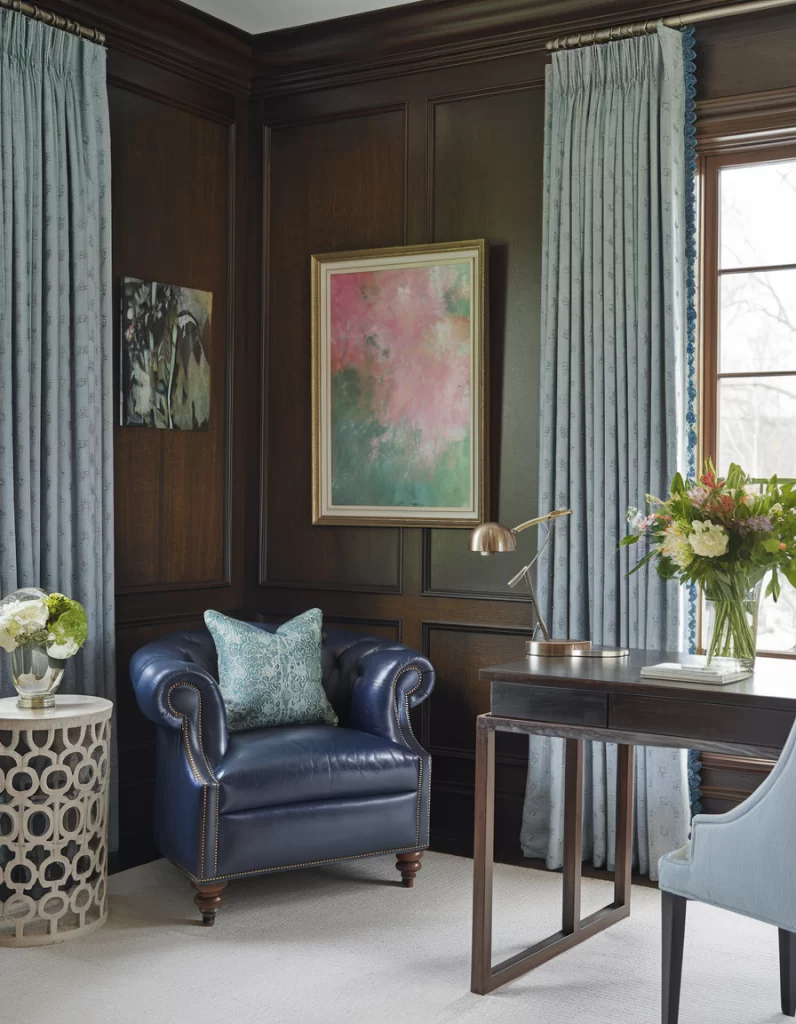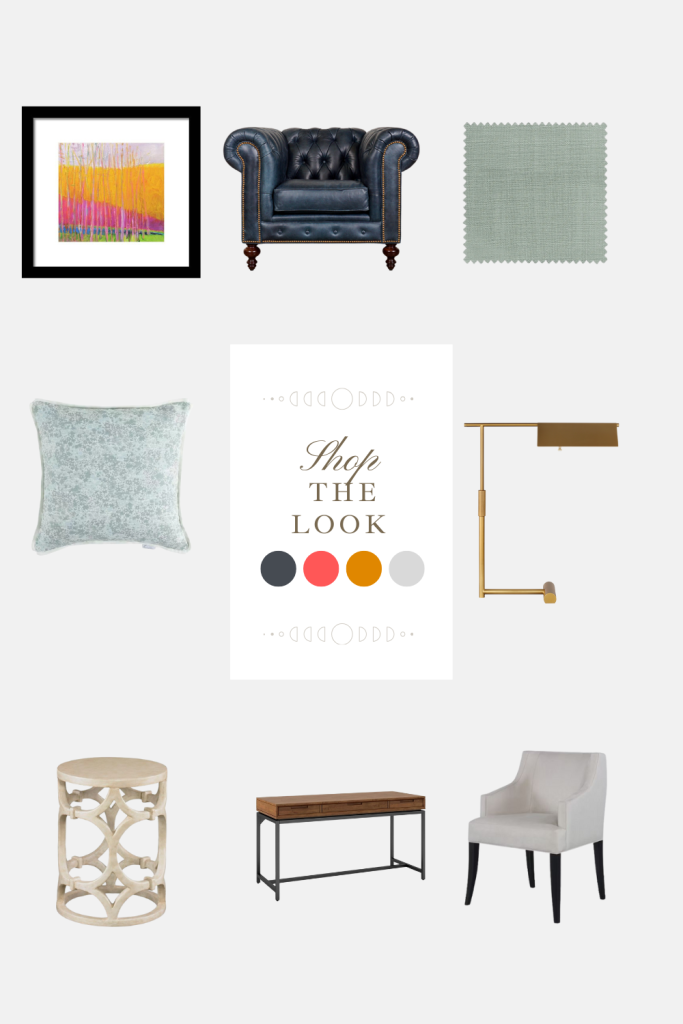Bringing Light into Dark Places: A New Way to Decorate Traditional Rooms

Sources Below
When you inherit a room with lots of architectural details and deep wood tones, it can be hard to keep it’s historical feel while also making it feel like it fits in with modern life. A Tudor study that was recently redone is a great example of how to find this balance. It shows how thoughtful updates can honor the past while also incorporating modern tastes.
To bring traditional spaces up to date, you don’t have to take away their character. Instead, you can lighten and brighten them up while keeping the original architecture. For example, wood paneling is a feature of Tudor and traditional style. Instead of painting over dark wood with white paint, which is often the first choice, think about how a professional clear coat can change the look. This treatment, which can be seen in the featured study, makes the wood more reflective, which helps light move around the room while keeping its natural beauty and historical value.
Window treatments are an important part of this change. Heavy damask drapes that used to make wood-paneled rooms look fancy are no longer used. Instead, light, modern fabrics are used to make tailored panels that go around the windows without being too much. The featured space has sleek gray curtains with a modern leaf pattern on the edge. This shows how to add pattern without making the space look too busy. When paired with simple woven shades, this method lets in the most natural light while still giving you privacy.
When working with darker architectural elements, picking the right furniture is even more important. The study shows how to mix styles and periods well: a modern leather chair and ottoman in deep charcoal make the room more comfortable while still staying true to its color scheme. Because it has an open back, an antique desk chair keeps its historical context without taking over the room. With its thin profile and shiny finish, the desk itself shows that traditional spaces can look good in modern styles and that modern work needs can be met without giving up style.
You can make a room look lighter by adding accessories and accent pieces. A light-finished open-work side table in the featured space breaks up the solid walls by adding negative space. In a traditional setting, this idea of adding “visual breathing room” can be used everywhere. For example, lamp bases made of glass, metal frames with open frames, or furniture legs that show the floor below can all be used.
The art we choose can have a big effect on how dark a room seems to us. One piece looks like a window scene, and the other is an abstract piece with bright pink tones. The designer chose pieces with lighter elements that break up the large expanse of wood paneling. When picking art for a dark room, choose pieces with lots of white space or lighter colors that add depth and brightness without clashing with the room’s architecture.
Floor coverings can also help lift a room that feels too heavy. A light-colored area rug with a subtle pattern is displayed in the room. It provides a bright base that looks great with the wood tones above. This helps to ground the space while making sure that the darker parts don’t feel too much. To tie together the different colors of the floors and walls, look for rugs in traditional rooms that have a mix of light and dark tones.
Lighting is very important in traditionally detailed rooms. The results of this study show that natural light, task lighting, and ambient lighting can all work well together. The brass desk lamp not only provides necessary light, but it also adds a modern touch because of its metallic finish, which makes light reflect better. It’s important to use lighting at different heights and angles when updating traditional areas so that the space can accommodate modern activities while still showing off architectural features.
Small styling choices can have a big effect on traditional rooms. For example, adding fresh plants by the designer makes the room feel alive and full of life. The plants are set up in a casual way, which helps keep the atmosphere from feeling too formal or stuffy, which can happen in traditional settings.
Respecting history while also being aware of what people need today is what makes this study’s transformation work so well. This space shows how to embrace the unique qualities of traditional architecture instead of fighting them. It does this by adding thoughtful updates that make the space both rooted in history and suitable for modern living.
The main point for homeowners who are having the same problems is simple: dark rooms don’t have to be sad, and classic styles don’t have to be stuck in the past. Finishes, furniture, and lighting can bring even the most classic rooms into the present day without losing their historical charm if they are chosen with care.

Art | Club Chair | Drapery
Pillow | Desk Lamp
Side Table | Desk | Desk Chair
